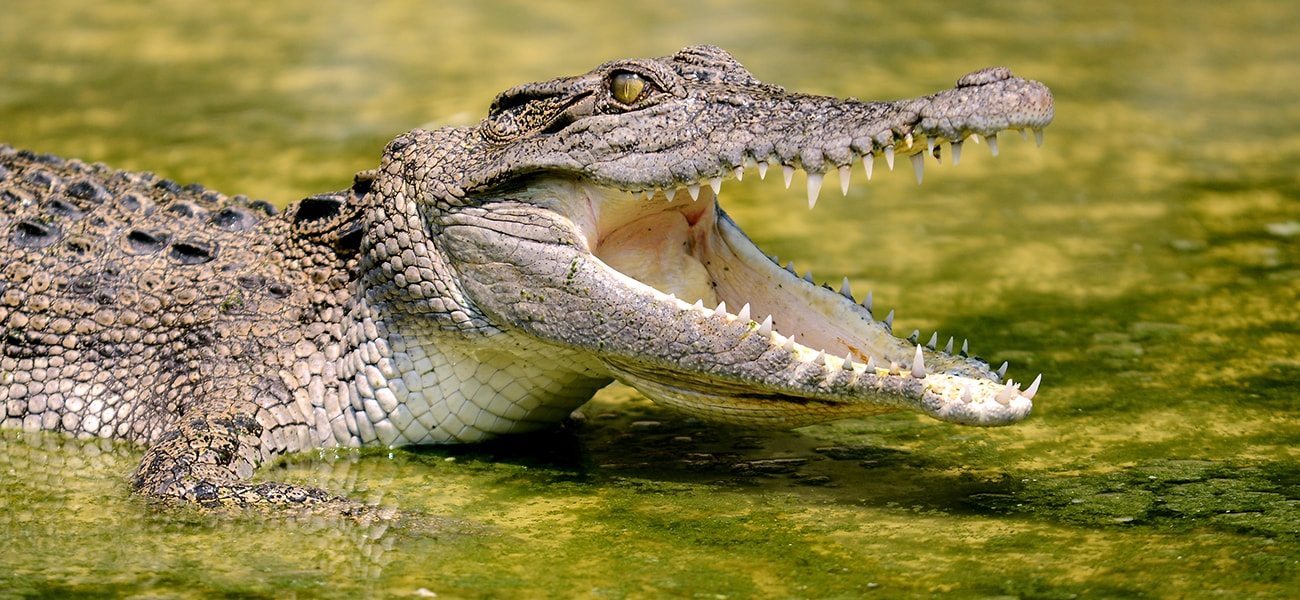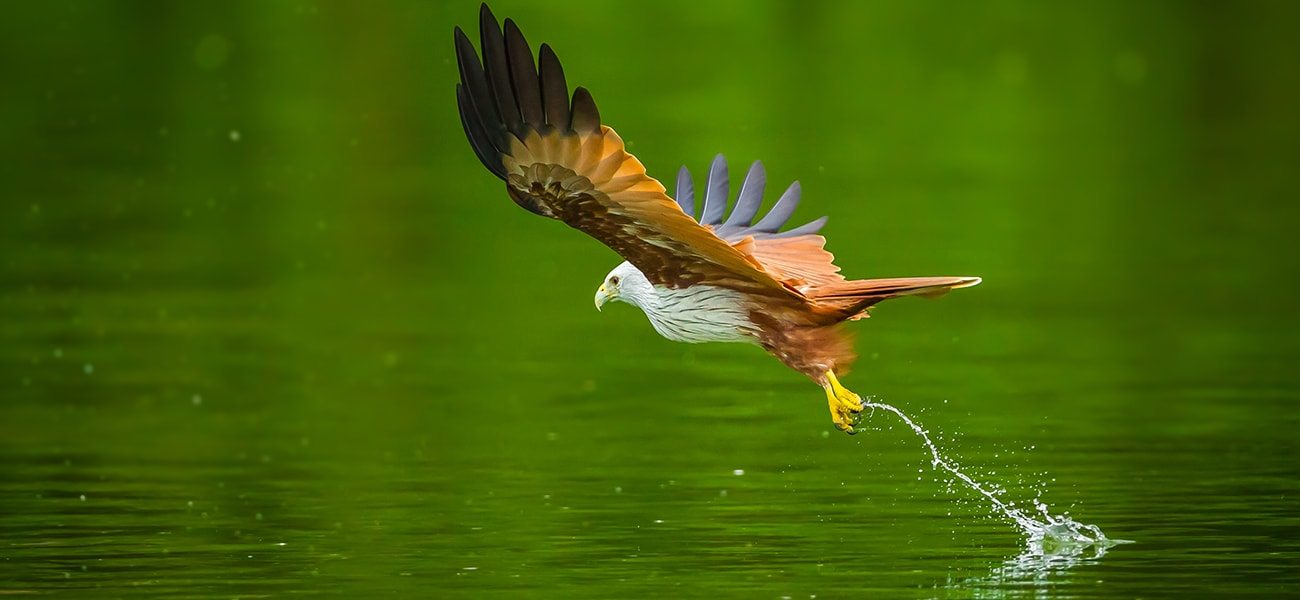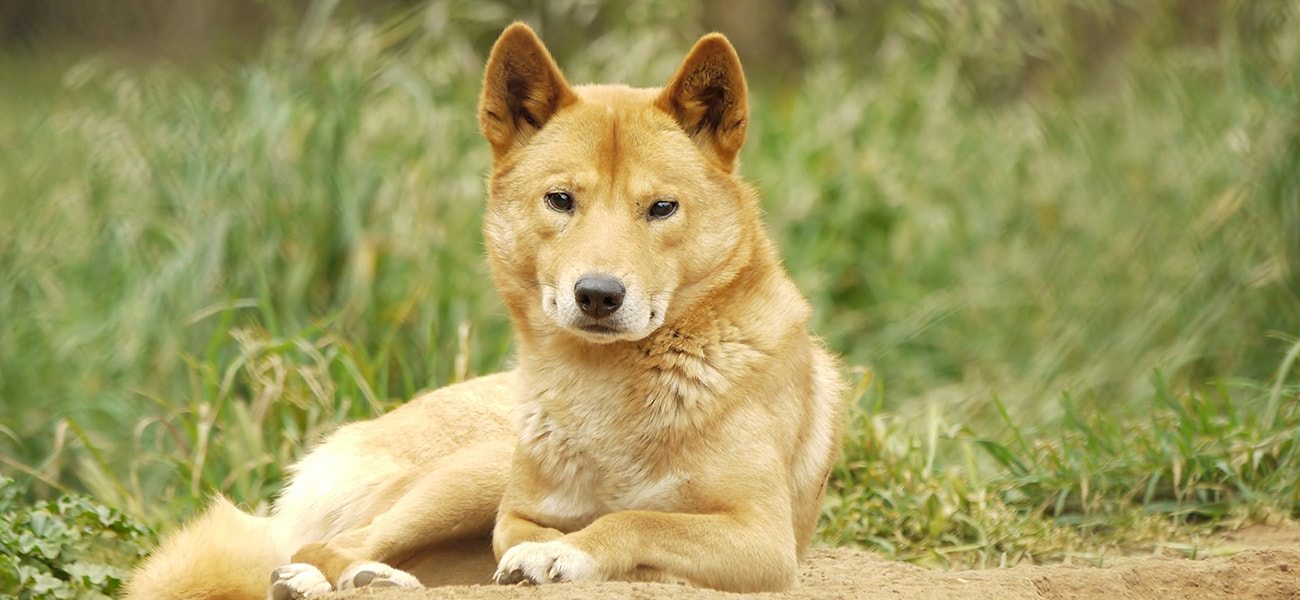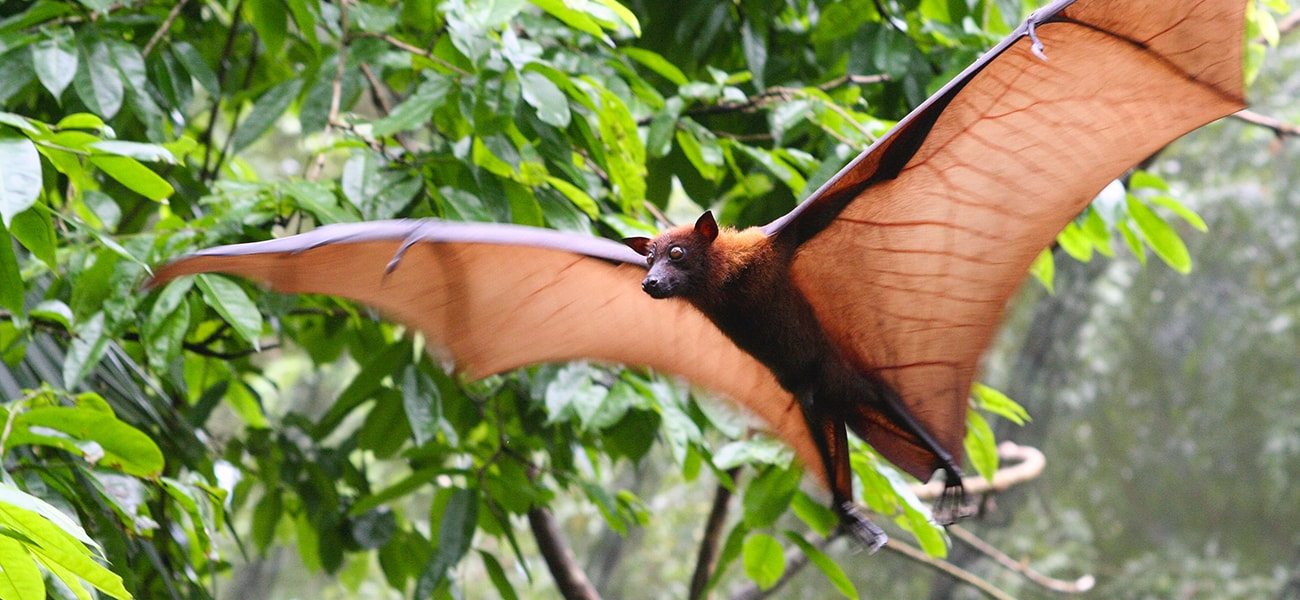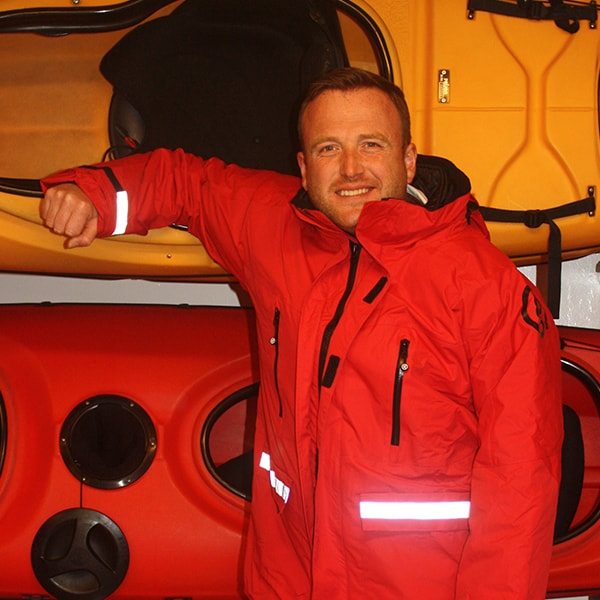Australia
About
If you want to explore an untamed wilderness and one that is considered to be of Australia’s hidden treasure, then do consider The Kimberley Coast or the Kimberleys as they are more generally known.
Here you can encounter and explore narrow mangrove channels and deep, narrow sandstone gorges gouged out of the landscape by wind and rain.
You can digest Indian Ocean sunsets in Broome, the Kimberley’s western gateway and ride a camel along Cable Beach, shop for pearls in Chinatown, see dinosaur footprints and birdwatch in Roebuck Bay, and catch the ‘moon staircase’ illusion.
Travel Guide
WHEN TO GO
The Kimberley has two seasons Wet and Dry! The Dry season runs from April to October and is the best time to visit. The temperature is pleasantly warm and there is not much, if any, chance of rain.
The Wet season runs from November to March, with temperatures climbing to over 40C with exceptional humidity. When the rain comes it’s unforgettable with thick black clouds, torrential downpours, thunder and fantastic lightning displays.
WHAT TO SEE
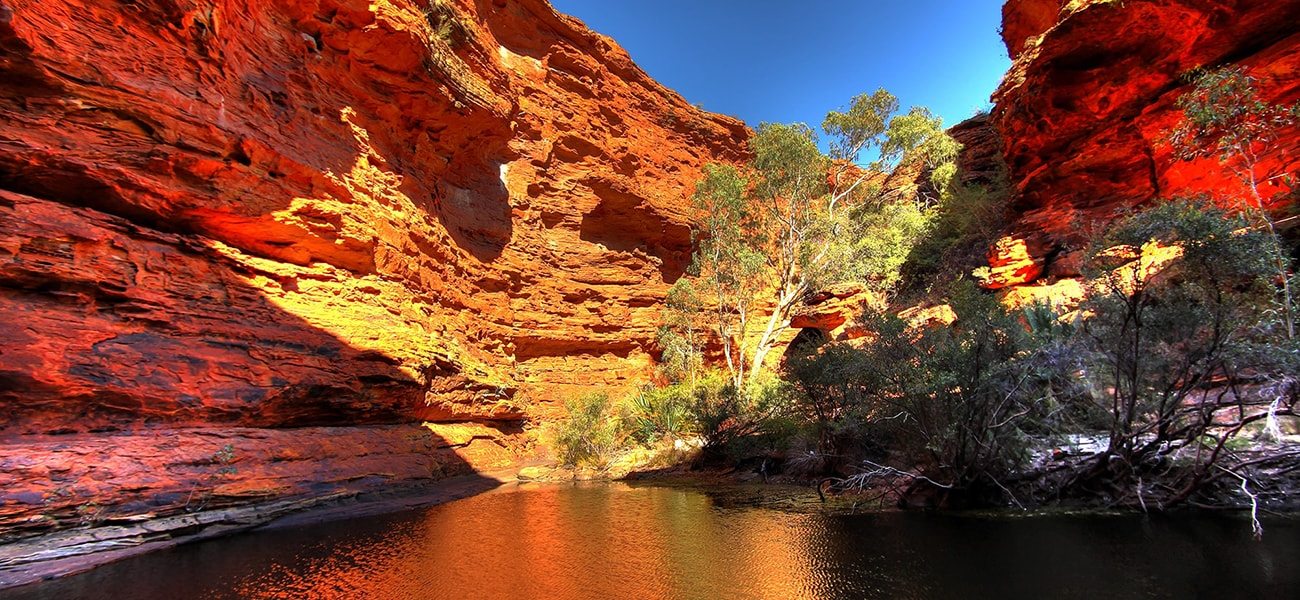 King George Canyon, King George River, Australia
King George Canyon, King George River, Australia
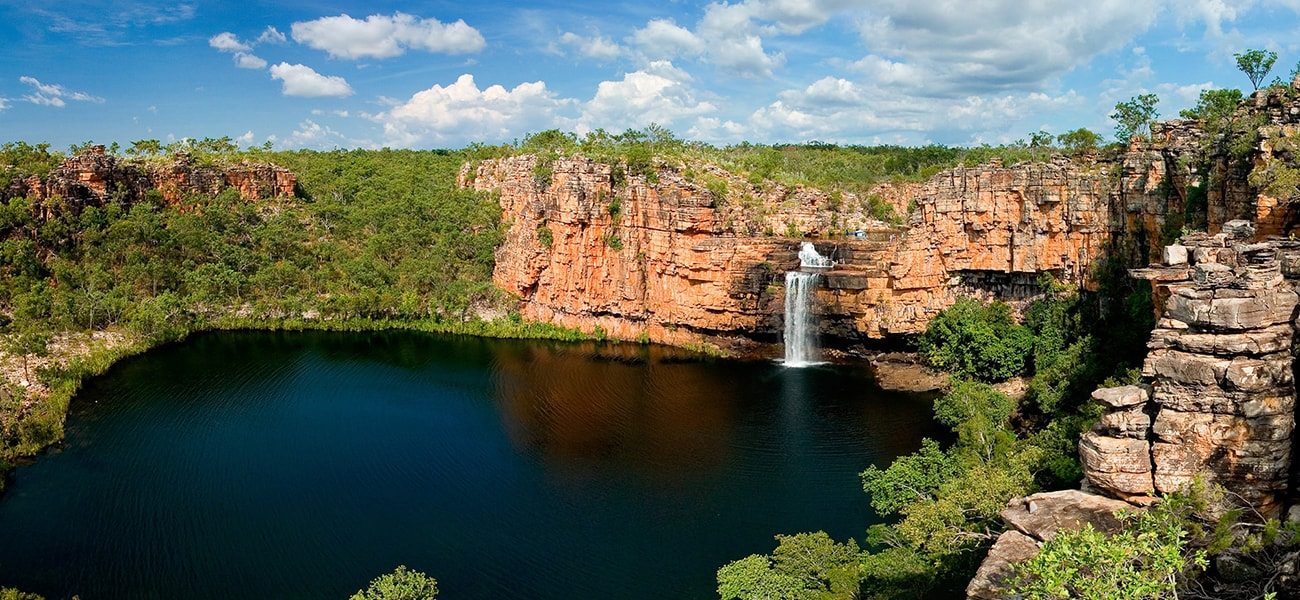 The Kimberley’s, Australia
The Kimberley’s, Australia
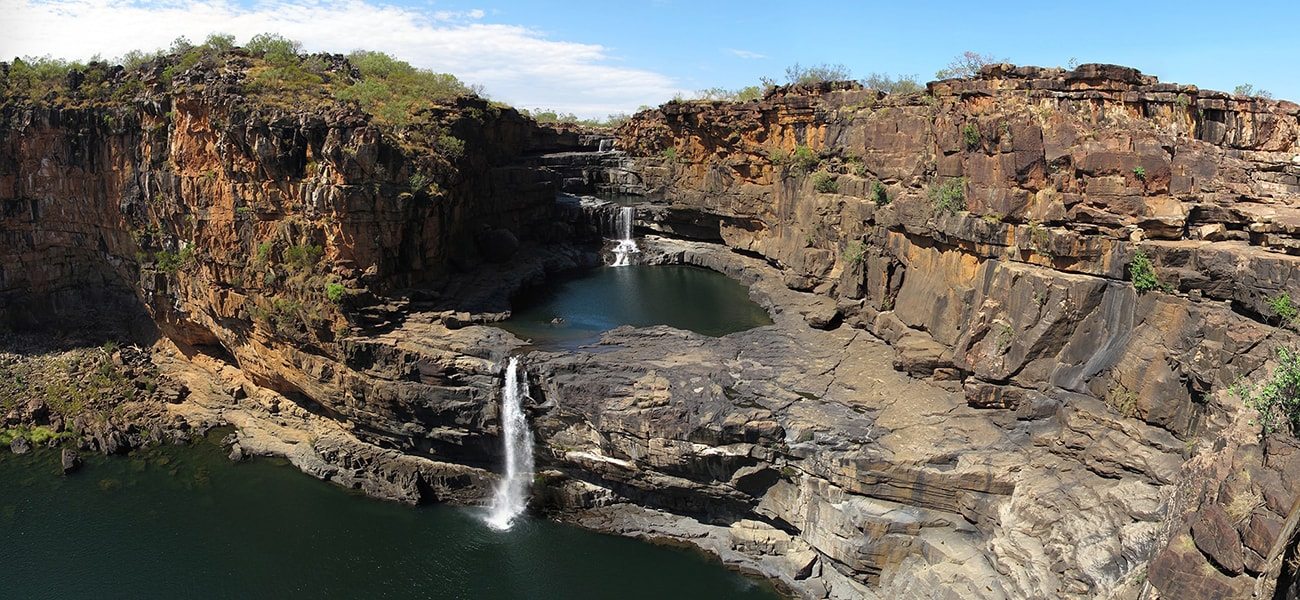 Hunter River, Mitchel Falls, Australia
Hunter River, Mitchel Falls, Australia
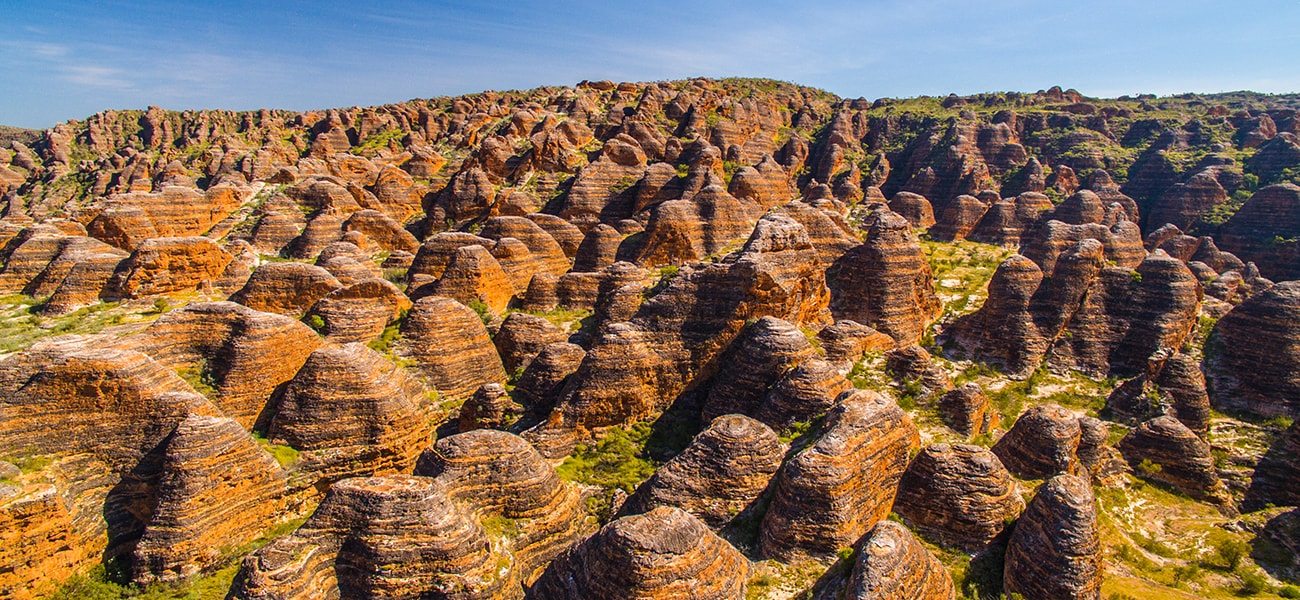 The Bungle Bungle Mountains, Australia
The Bungle Bungle Mountains, Australia
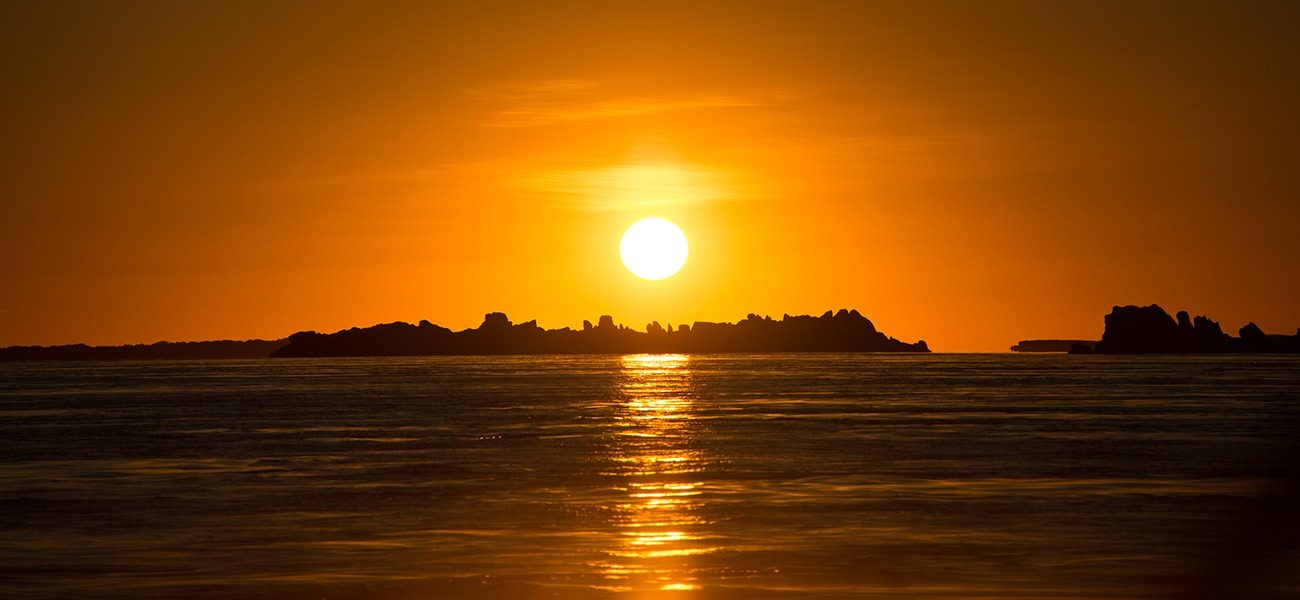 Buccaneer Archipelago, Australia
Buccaneer Archipelago, Australia
THE KIMBERLEY'S
The Kimberley’s’ scenery is simply outstanding. From stunning waterfalls and orange striped mountains to Aboriginal rock drawings and culture thousands of years old and some amazing wildlife including huge saltwater crocodiles.
The Staircase to the Moon is a natural phenomenon which occurs when a full moon rises over the exposed tidal flats of Roebuck Bay. It happens 2 – 3 days a month between March and October with first two days of the Staircase to the Moon generally also playing host to the Staircase to the Moon markets at Town Beach.
KING GEORGE RIVER REGION
The King George Falls are inaccessible by vehicle due to their remote location. They are one of the Kimberley’s most magnificent natural wonders. The thundering water falls over 80 meters (260 feet), the spectacle of its amazing twin side by side cascades are among the highest in Australia.
The river weaves through an amazing landscape of near vertical spectacular red rock formations.
HUNTER RIVER REGION
The Hunter River is home to an immense mangrove system surrounded by soaring red sandstone cliffs. Naturalist Island at the mouth of the river has a stunning stretch of sandy beach.The highlight inland is the famous Mitchell Falls where four tiers of majestic waterfall plunges into deep pools that flow out into the Mitchell River.
WYNDHAM
Wyndham was founded as a small Gold Rush town on the Cambridge Gulf where several rivers converge.
Today Wyndham is a gateway to the breathtaking Bungle Bungle mountain range and the nearby Ord River. The Bungle Bungle Mountains in Purnululu National Park are a World Heritage Site where 350 million years have moulded them into geological formations of giant orange and black striped domed rocks.
BUCCANEER ARCHIPELAGO
Roughly 800 islands make up the Buccaneer Archipelago surround and shelter the impressive spread of Yampi Sound. Some of the richest iron ore in the world is extracted here to this day. The coastline of Yampi is made up of rock strata wildly twisted and contorted into gigantic folds.
The Islands are home to South Sea Pearl farms and the famous Horizontal Waterfalls where massive tidal movements force the seawater ‘waterfall’ through a narrow gap in the cliff walls.
Wildlife
KIMBERLY WILDLIFE
Amazing birdlife, including giant raptors and the Brahminy Kite are specialities of the Kimberleys.
The narrow mangrove channels also shelter numerous bird species, mudskippers, fiddler crabs and the deadly saltwater crocodile; arguably the most aggressive of the crocodile species.
Freshwater crocodiles are found in freshwater pools, billabongs, creeks and rivers. They are generally considered harmless, feeding on fish, frogs, bats and birds.
The region has an amazing array of marsupials and mammals, from wallabies, possums, dingoes, to flying foxes. For botanists the rugged landscapes of the Kimberley support over 1,500 species of plants.


